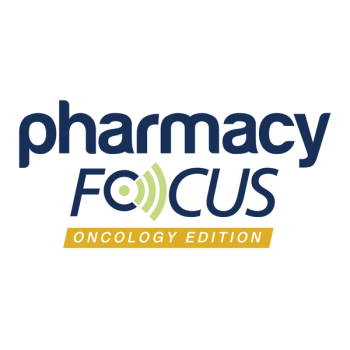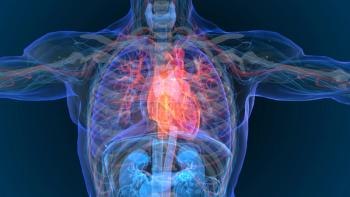
Managing Opioid Complexity: The Role of Pharmacists in OUD and C-POD Care
Key Takeaways
- OUD management includes medications like buprenorphine, methadone, and naltrexone, combined with non-pharmacologic approaches to reduce opioid use and prevent overdose deaths.
- Recent policy changes, such as the elimination of the X-waiver and telehealth prescribing, have improved access to OUD treatments, contributing to a decline in opioid-related deaths.
In a session at the 2025 Virtual Conference on Pain and Palliative Care, Isabella Zerfas, PharmD, and Abbey Galligan, PharmD, BCPS, explore effective pain management strategies for opioid use disorder (OUD) and complex persistent opioid dependence.
In 2022, there were over 100,000 opioid-related deaths in the United States, representing the highest annual toll since 1999. Although these rates have dropped significantly since then, opioid use disorder (OUD) remains a critical public health crisis, affecting thousands of individuals and straining health care systems nationwide.1
In a session at the 2025 Virtual Conference on Pain and Palliative Care, Isabelle Zerfas, PharmD, pain management clinical pharmacy specialist at the University of Michigan Health, and Abbey Galligan, PharmD, BCPS, clinical pharmacy specialist in pain management at the University of Michigan Health, discussed the challenges of pain management in patients with OUD and identified treatment approaches that adequately address varying degrees of opioid dependence.2
Defining OUD
OUD is characterized by problematic, compulsive opioid use that significantly impacts a person's life, often to the detriment of their health. Patients with OUD often present social, occupational, and compulsive behaviors and cravings with rapid escalation of use. Chronic pain is prevalent in 45% to 64% of patients with OUD, making pain management particularly complex in this population.2
The standard of care for OUD is medications for OUD (MOUD), such as buprenorphine, methadone, and naltrexone, which have been proven to reduce opioid use, prevent overdose deaths, and support long-term recovery when combined with non-pharmacologic approaches. Increased access to these agents resulted in significant reductions in opioid-related deaths, a particularly notable feat amid the opioid epidemic.2
“This certainly has been an exciting year, as opioid-related deaths have decreased by 24%,” explained Zerfas. “This is the first year of decline in opioid-related deaths since 2018 and has been attributed to widespread distribution of naloxone, which is now available over the counter, changes in drug supply, and resumption of prevention and response programs following the COVID-19 pandemic.”2
Federal actions have also improved OUD treatment access, leading to the substantial reduction in opioid deaths. For example, the elimination of the X-waiver removed previous restrictions on prescribing buprenorphine—increasing its access to patients in need of treatment. There was also the passing of the Mental Health Parity and Addiction Equity Act, which protects patients against discrimination from insurance companies, ensuring that mental health and substance use disorder treatments are covered similarly to other medical treatments. Telehealth prescribing abilities further increased access, particularly in remote areas or for patients with transportation challenges. These efforts contribute to a broader strategy aimed at increasing treatment accessibility, reducing barriers to OUD management, and providing more comprehensive support for patients with OUD.2
Challenges in Chronic Pain Management
However, effective chronic pain management for patients with OUD remains challenging. Treatment is often hindered by persistent social stigma, regulatory hurdles, and limited integration of addiction care into mainstream medical settings. This is further compounded by significant disparities in access to treatments, particularly for racial and ethnic minorities, rural populations, and individuals with low socioeconomic status. Without equitable access to care, many patients face delays or complete barriers to receiving medications that can support recovery and reduce overdose risk.2
“Despite the success amid the opioid epidemic, there remains room for improvement in management of opioid use disorder,” Galligan said. “For example, we know 35% of treatment facilities do not offer MOUD, [and] overdose is a leading cause of death for Americans aged 18 to 44. There are also large racial, ethnic and geographical disparities for MOUD.”2
Another challenge is misdiagnosis in patients with complex persistent opioid dependence (C-POD)—a nuanced clinical phenomenon between physical dependence and addiction. It is more difficult to diagnose compared with OUD because patients with C-POD often do not present with compulsive behaviors and gradually develop poor pain control. C-POD is also associated with neurobiological features such as opioid-induced hyperalgesia, persistent dysphoria, and neurological changes in pain and emotional regulation systems.2
Changes in these regulatory systems result in heightened pain sensitivity, reduced tolerance for discomfort, and emotional instability, which can further complicate clinical assessments and treatment planning. As a result, patients with C-POD may be misclassified as having OUD or undertreated for their pain, leading to inadequate care and worsening outcomes. Understanding the complexity of C-POD is crucial for preventing mismanagement and supporting optimal patient outcomes.2
"Recognizing these neurobiologic changes as a consequence of long-term opioid use helps us shift from accusation and blame to understanding and appropriate treatment planning," said Zerfas.2
Management Strategies for OUD
The cornerstone of OUD treatment is medication-assisted treatment (MAT), which combines pharmacologic therapy with psychosocial support. Among available medications, buprenorphine is generally preferred, especially in the context of widespread fentanyl use. Effective dosing typically ranges between 24 and 32 mg per day to adequately manage cravings and withdrawal symptoms.2
“Twenty-four to 32 milligrams per day predicts the best treatment outcomes compared to lower doses,” explained Galligan. “That's especially true now in the era of fentanyl, as every patient now that we see here, primarily with OUD, is using fentanyl and not heroin.”2
Methadone is another effective option, often administered at doses around 120 mg per day or higher, although its use is more tightly regulated. Naltrexone is the least preferred due to challenges with initiation and patient adherence, but it may be suitable for certain individuals who cannot or choose not to use opioid agonist therapies.2
In addition to MAT, a comprehensive treatment approach should include tapering patients off opioids when clinically appropriate, optimizing non-opioid analgesics for pain management, integrating non-pharmacologic interventions such as cognitive behavioral therapy or physical therapy, and addressing co-occurring psychiatric conditions.2
Management Strategies for C-POD
Managing C-POD requires a more nuanced approach, as abrupt opioid tapering can lead to significant functional decline. Instead, the speakers recommend clinicians consider maintaining a patient’s current opioid regimen if tapering results in worsened pain or diminished quality of life. Buprenorphine remains a key pharmacologic tool, but dosing must be individualized and may exceed typical doses used for chronic pain management. Methadone can also be considered, though access is often limited, and its use requires specialized prescribing authority.2
"For patients with C-POD and chronic pain, we typically follow methadone dosing for pain, which is lower doses 2 to 3 times per day. This is because analgesic benefits last 8 to 12 hours,” Galligan said.2
Non-pharmacologic strategies are central to C-POD management and should be maximized. These include physical therapies, behavioral interventions, and referrals to psychiatric or psychological care when appropriate. It is also essential to identify and address underlying pain drivers, such as undiagnosed mood disorders, trauma, or central sensitization.2
Despite their differences, OUD and C-POD share several foundational management strategies. Non-opioid analgesics, such as NSAIDs, acetaminophen, or certain adjuvant medications, can provide meaningful relief. Complementary therapies—including massage, aromatherapy, and specialized pain psychology—can support patients’ physical and emotional well-being.2
The Role of Pharmacists
Pharmacists play a critical role in the identification, management, and support of patients with OUD and C-POD. As one of the most accessible health care professionals, pharmacists are uniquely positioned to screen for potential opioid misuse, counsel patients on appropriate use of MOUD, and help reduce stigma through patient-centered communication. In both community and clinical settings, pharmacists can monitor adherence, detect early signs of relapse or treatment complications, and collaborate with prescribers to adjust therapy as needed.2
"Pharmacists play a really important role in medication management in this area, as well as patient advocacy... making sure that if you see something, say something to your provider team,” said Zerfas.2
In cases of C-POD, pharmacists can provide valuable insights into complex medication regimens, help identify opioid-induced adverse effects like hyperalgesia or tolerance, and recommend appropriate non-opioid alternatives or adjunctive therapies. They also play a vital role in educating patients about the rationale behind individualized treatment strategies and support gradual opioid tapering when appropriate.2
Effectively addressing OUD and C-POD requires a comprehensive, individualized approach that incorporates both pharmacologic and non-pharmacologic strategies. Pharmacists, through their accessibility and clinical expertise, are key partners for supporting safe medication use, optimizing pain management, and advocating for equitable, stigma-free care.
REFERENCES
1. Drug overdose deaths: Facts and figures. National Institute on Drug Abuse. August 2024. Accessed May 21, 2025. https://nida.nih.gov/research-topics/trends-statistics/overdose-death-rates#Fig1
2. Zerfas I, Galligan A. Pain and progress: Providing care and compassion in OUD. 2025 Virtual Conference on Pain and Palliative Care. May 20, 2025.
Newsletter
Stay informed on drug updates, treatment guidelines, and pharmacy practice trends—subscribe to Pharmacy Times for weekly clinical insights.




















































































































































































































